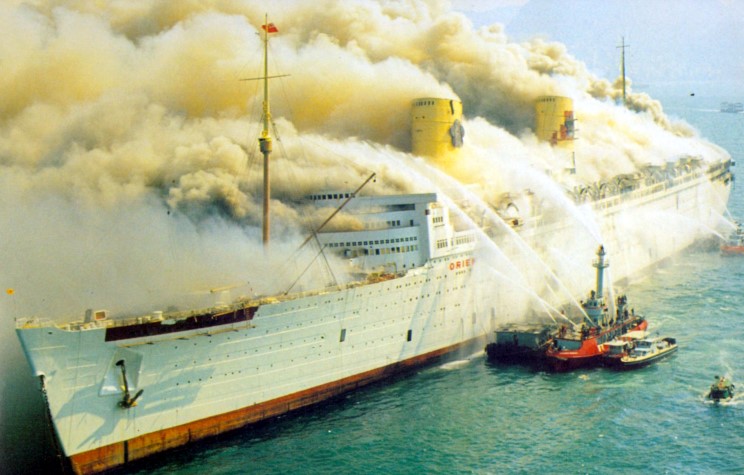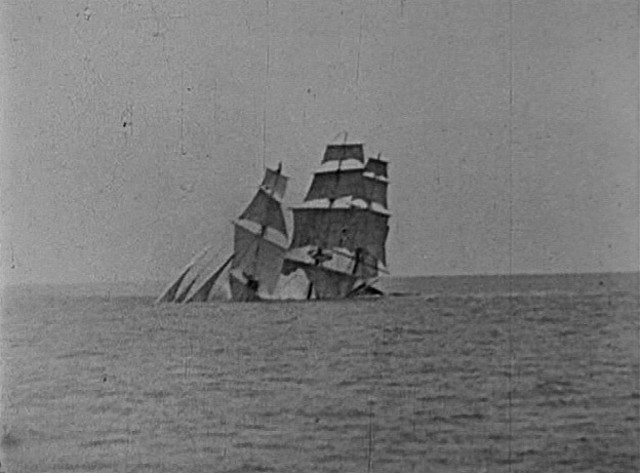
The RMS Queen Elizabeth on fire and as a shipwreck in Hong Kong Harbour, 1972. While being converted into a University cruise ship (a rather amazing idea), the world's largest passenger ship mysteriously caught fire as her refurbishments neared completion. So much water was poured into her, in a vain attempt to combat the blaze the ship eventually capsized from the weight, and lay wrecked in Hong Kong Harbour for many months, until eventually being partially scrapped to be used as landfill for Hong Kong Airport. Parts such as the keel and boilers still lie on on the seabed, and are still marked on local maps as 'Foul', an unsafe area to anchor a boat.
The wreck of the RMS Queen Elizabeh made for one of the more interesting film locations and sets when used as a covert MI6 headquarters in the 1974 Bond film 'The Man with the Golden Gun'. To accommodate for the capsized liner's continuous lean, the Secret Service apparently constructed new floors, ramps, staircases and bookshelves, making for excellent clashing wallpaper patterns, bizarrely distorted corridors,and staircases upon staircases.









